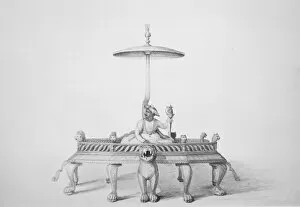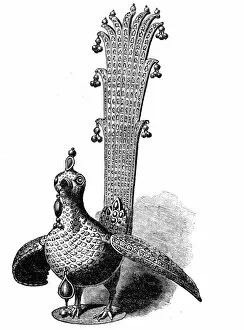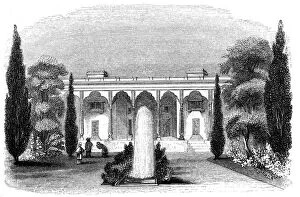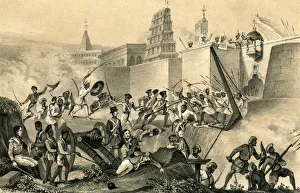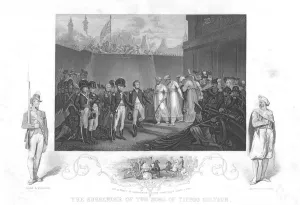Tippu Sultan Collection
Tippu Sultan, also known as Tippoo Saib, was a prominent figure in Indian history during the late 18th century
All Professionally Made to Order for Quick Shipping
Tippu Sultan, also known as Tippoo Saib, was a prominent figure in Indian history during the late 18th century. Born in 1750, he ruled the Kingdom of Mysore and became known for his resistance against British colonialism. Despite facing numerous challenges, Tippu Sultan displayed great military prowess and strategic thinking. One significant event was the Battle of Seringapatam where Tippoo Sahib met his demise in 1799. This lithograph captures the intensity of that momentous battle. Another artwork depicts Tippoo Sahib at the Lines of Travancore, showcasing his presence and influence beyond Mysore. Tippoo Sultan's reign is further illustrated through various images such as him seated on his majestic throne or with his sons delivered as hostages to the English. These visuals provide glimpses into both his power and vulnerability. The admiration for Tippu Sultan extended beyond India's borders; even St. Georges Hall featured a grand buffet inspired by him in 1844. The opulence associated with this historical figure is evident through depictions like "Tippo Saibs peacock, " highlighting extravagant symbols of wealth. Despite being created long after his time, these artworks continue to capture our fascination with this enigmatic ruler who left an indelible mark on history. Lord Cornwallis receiving Tippoo Saib's sons showcases diplomatic exchanges between East and West during that era. Even today, remnants of Tippu Sultan's legacy can be found in places like Government House where there exists a state seat dedicated to him since 1925. His story continues to inspire curiosity among historians and art enthusiasts alike. These captivating images offer us a glimpse into the life and times of Tipu Sultan - a valiant warrior who fought against imperialism while leaving behind an enduring legacy that still resonates today.








